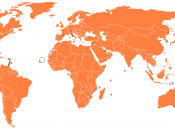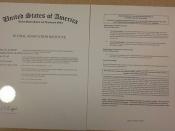Until several hundred years ago, ownership and protection has only been granted to objects of a physical or concrete nature, such as a piece of land or a building. However, people began to feel the need to protect and receive credit for their inventions and other products of their intellectual capacity. This desire is the driving force for the creation of intellectual property rights. Traditionally, intellectual property rights protected the creations of the mind such as literary or artistic works, designs and symbols (WIPO). In the past 20 years, another item has been selected to be protected under intellectual property rights: genes and other biological materials.
The most prominent type of intellectual property used in protection of biological material is patents. In order to be eligible for a patent, the invention must satisfy the three criteria of novelty, utility and non-obviousness (WIPO). The requirement of novelty means that the invention has not been available to the public, through printed publications or commercial sales, or has not applied for a previous patent (Patent Basics).
Anything that indicates the previous existence of the invention, or anything similar to it, is termed prior art (Patent Basics). The condition of utility indicates that the invention must have a use (WIPO). The final prerequisite of non-obviousness specifies "that a person with ordinary skill in the art would not be likely to develop the same invention, even knowing all there was to know in the prior art." (Patent Basic).
Modern genetic engineering practices and research requires large amounts of genetic material and organisms, especially in the field of agricultural development. Corporations and other private entities began to scout for "new" organisms and genetic material to sustain their practices and as well as profits. The term biodiversity prospecting, or bioprospecting, is used to describe this activity. According...



Good Job
I like the way you had written it. Nice!
2 out of 2 people found this comment useful.